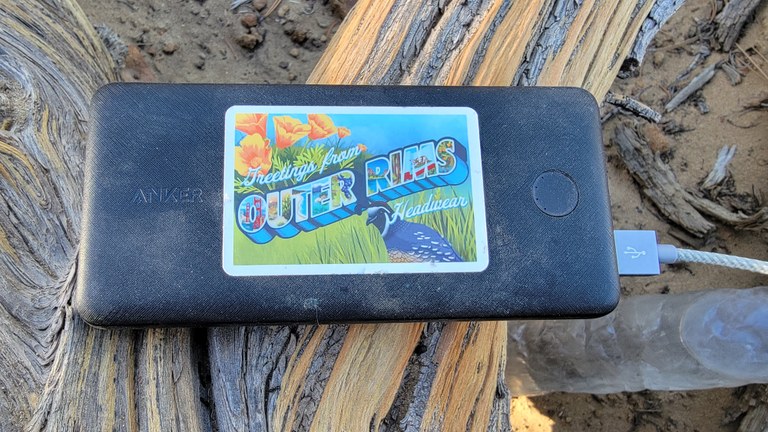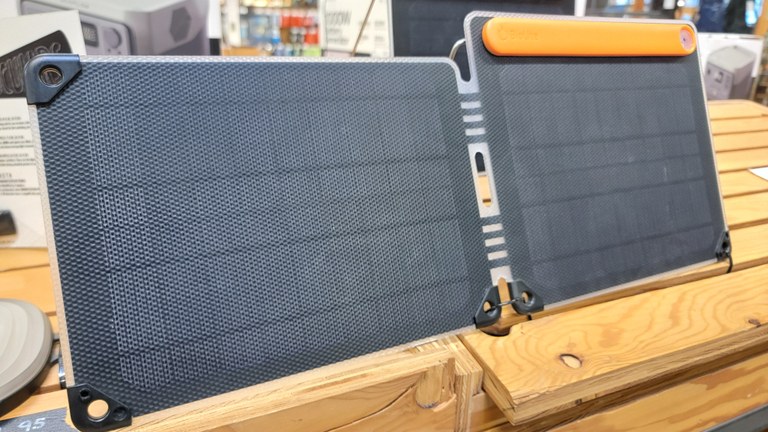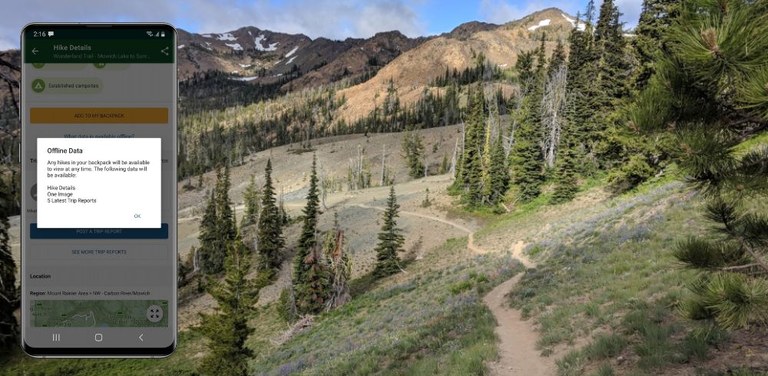 Washington Trails
Association
Washington Trails
Association
Trails for everyone, forever
Phones and other electronics have become a key tool for modern hikers. Here’s what you need to know about keeping your electronics charged while on trail. By Joseph Gonzalez
Many trail users enjoy that getting outside allows them to unplug from the interconnected digital world. But as technology advances and makes our ability to get outside easier, the trails community is relying more and more on rechargeable electronics while outside. Whether you’re using your phone, a GPS device, a headlamp or a camera, chances are you’re depending on rechargeable devices when you hike.
In this article, we’ll share what you need to know about best practices for backcountry electronics, how to pick a recharging method that’s right for you, what to pack and more. Read on so you can stay at 100% battery on your next WTA backcountry volunteer hitch, thru hike or offline trip.
There are a ton of options to recharge your electronics in the backcountry, but it depends on your hiking plans. You’ll want to account for trip duration, weather conditions and group needs in your recharge strategy.
There are two main tools hikers can use to recharge: portable batteries and solar chargers. Consider where and when you’re hiking and for how long before you decide which strategy is right for you. Power banks (portable batteries) are more popular, so that’s where we’ll start.
A power bank is an external battery that holds electricity. It has a finite amount of power available and you’ll want it to be fully charged before your outing.

Pros
Cons
A solar charger is a solar panel that converts sunlight into electricity. It holds little charged power on its own. Some solar chargers can charge your phone directly. Others will only charge another battery pack.

Pros
Cons
There are a ton of makes and models on the market for both options. Taking count of what devices you need to charge will help you decide which strategy is right for you.
Some items that might need charging while you’re on trail:
Depending on your style of hiking, some hikers will prefer to play it safe and bring extra juice. Other hikers will look for the best weight-to-charge ratio.

For hikers who like to do all of their own research before buying, here is some basic vocabulary you should know before you start shopping:
TLDR: the more mAh, the more energy the power bank will hold. Modern power banks might hold enough energy to charge your cell phone 2-4 times. But this is not a coverall for the best power bank for you: the time it takes to charge, product weight and the amount of charge your electronics need should all play a factor in your choice when buying a power bank.
Charged-up to get outside? Here are some great applications for your new hardware:
WTA runs multi-night volunteer trail work parties from March to October. These trips range from a few nights to a whole week, often in remote backcountry locations statewide. Packing a bit of extra juice for your electronic needs is handy for volunteers hard at work in Washington’s backcountry
Learn what kind of backcountry volunteer trip is right for you and sign up
With our free mobile app, you can hike with the power of WTA’s free online resources in the palm of your hand. App information is accessible offline for your saved hikes, even if you’re deep in the backcountry for days on end.

Hike details and the last few trip reports are a few of the features hikers can access offline with Trailblazer.
Before you lose service, just save a hike to your My Hikes list to have quick offline access to driving directions to the trailhead, detailed descriptions of each hike and the 5 most recent trip reports for each hike. By the way, did we mention you can file trip reports offline too?
Modern technology doesn’t need to detract from your outdoor experiences. With modern tools and charging capabilities, these electronics can help put a new spark in your recreation plans. Just head to our volunteer page to find the perfect hitch to use this technology on and check out our Trail Smarts page to learn about other hiker skills!